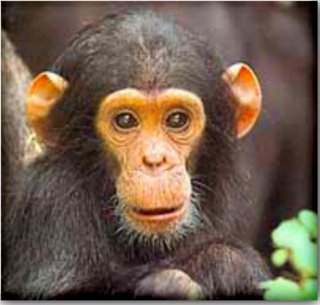
How do monkeys celebrate Valentine's Day? It's a question that philosophers have asked for a long time. In the last 50 years, primatologists have devoted a great deal of effort to answering this important question. Here are some of their findings:
Bonobos have a marked preference for full bodied red wines and chocolate. A recent Congo survey reveals that Forest Glen Merlot (Vintage 2004) and Cadbury Dark Chocolate far surpass other bonobo choices. Bongo Bongo, spokesperson for the Bonobo Consumers Union, commented "Forest Glen Merlot has a wonderful blend of grape, leather, and raspberry that teases the palate while still leaving something to the imagination. All in all, I think that you will find it to be an amusing little vintage, and you will be charmed by its presumption!"
Chimpanzees, on the other hand, lean towards a more earthy, powerful liquor. This appears to mirror their more aggressive nature. Twelve year old single malt scotch is by far the preferred choice in libations for our furry cousins. Cheetette, the granddaughter of Cheeta (the star of Tarzan movies) commented "Scotch is an In Your Face kind of liquor. You don't need to pussyfoot around the flavor or the powerful kick that Scotch has on your perceptions. It gets you to 'The Buzz Zone' quickly and without any pretense. Also, you don't get a hangover with Scotch - as long as you don't drink too much!"
Capuchin Monkeys have a marked preference for 30's and 40's old standards (like "Stardust" and "The Memory of You") along with with a passion for Grappa, the Italian aperitif. Johnny Mercer and Hoagy Carmichael are much admired at Capuchin Valentines Day celebrations.
No matter how you celebrate it, I think that the message of Valentine's Day is to find your Prime-Mate and to tell them how much they mean to you!
 Two articles appeared recently in online publications that described spear creation and use by chimpanzees.
Two articles appeared recently in online publications that described spear creation and use by chimpanzees. .jpg)

.jpg)
.jpg)
 hipping to other countries would be too expensive. (Sorry Sri Lanka!) However I welcome comments from visitors all over the world.
hipping to other countries would be too expensive. (Sorry Sri Lanka!) However I welcome comments from visitors all over the world..jpg)
.jpg)




.jpg)

.jpg)

.gif)










.jpg)